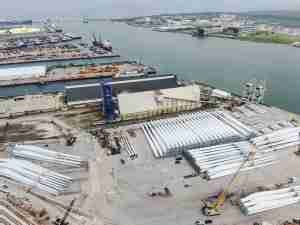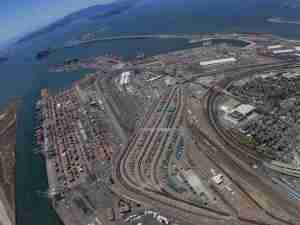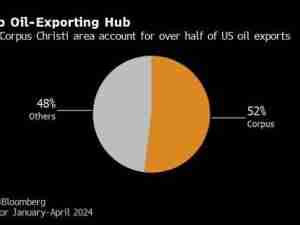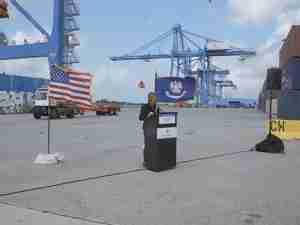“The Port of Savannah experienced a remarkable recovery in FY 2010 (July 1, 2009 – June 30, 2010),” said Foltz. “The 9.7-percent increase in TEUs (twenty-foot equivalent units) for the year allowed the GPA to return to near record levels reached in FY2008 and continued its momentum gaining market share across the Southeast.”
In FY2010, GPA posted its best year ever for exports moving 1,139,983 TEUs, which was a 15.5-percent increase compared with the previous fiscal year. During FY2010 the GPA handled nearly 12 percent of the total U.S. loaded container exports based on tonnage. The top five export commodities for FY2010 were wood pulp, paper and paperboard, food, clay and chemicals.
“Georgia’s deepwater ports are one of the brightest spots in the Georgia economy right now,” said GPA’s Chairman of the Board Alec L. Poitevint. “Savannah has maintained its place as the fourth largest U.S. container port by having the best workforce, unsurpassed infrastructure, room to grow and a sound marketing plan to capitalize on its strengths.
According to a University of Georgia study released earlier this year, Georgia’s deepwater ports supported more than 295,000 jobs throughout the state during FY2009, which was an increase of 9,000 jobs in retail, transportation and logistics industries.
Additionally, Foltz reviewed plans to deepen Savannah’s harbor. “The Savannah Harbor must be prepared for the demands of global shipping after the Panama Canal Expansion is completed in 2014,” said Foltz. “With larger vessels already calling on the Port of Savannah, it is imperative that the Savannah Harbor Expansion Project (SHEP) is approved and remains on schedule.”
The single most important factor for the Port of Savannah’s future success remains the completion of the SHEP. The work to deepen the Savannah Harbor up to 48 feet at mean low water is precisely the type of effort that will bring comprehensive economic recovery for the United States.
Foltz asked the audience to become involved in efforts to deepen the harbor by joining the GPA’s SHEP Ally program, a growing number of private citizens who will communicate support of Savannah’s harbor expansion with local, state and federal officials.
Finally, Foltz highlighted environmental initiatives throughout the port in conjunction with its capital improvement projects and port operations. In FY2010, the GPA reused and recycled 94-percent of its construction debris for its nine major construction projects. The GPA has also increased its treatment of stormwater runoff by nearly 800 percent in the last decade. Through the GPA’s crane electrification, use of refrigerated container racks, upcoming rubber-tired gantry crane repower project and use of fuel additives, the Port of Savannah will avoid use of more than 4.5 million gallons of fuel annually.











